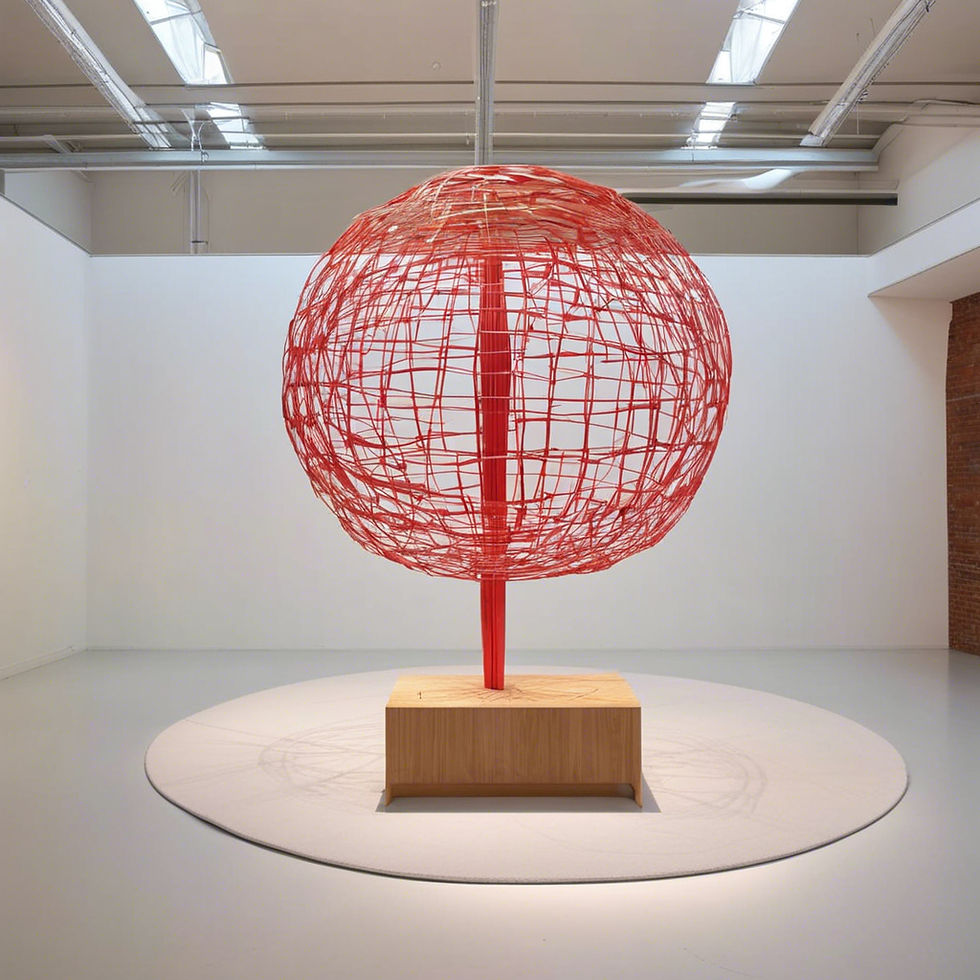Contemporary Art and the Philosophy of Aesthetics: An Exploration
- Ahmed Kheder
- Jul 3, 2024
- 4 min read
Introduction
Contemporary art is a dynamic field that encompasses a wide range of styles, mediums, and philosophies, often challenging traditional boundaries and inviting diverse interpretations. The philosophy of aesthetics, which examines the nature of art, beauty, and taste, provides a crucial framework for understanding and appreciating contemporary art. This article delves into the intricate relationship between contemporary art and the philosophy of aesthetics, exploring how modern artworks provoke thought, evoke emotions, and redefine the very concept of art.
Defining Contemporary Art
Contemporary art refers to art produced from the latter half of the 20th century to the present day. Unlike previous art movements defined by specific styles or periods, contemporary art is characterized by its eclectic nature, embracing various mediums, techniques, and concepts. Artists today use everything from traditional painting and sculpture to digital media, installation, performance, and even biotechnology. This diversity reflects the pluralistic society we live in, where multiple voices and perspectives coexist and interact.
The Evolution of Aesthetics
Aesthetics, a branch of philosophy dealing with the nature of beauty and artistic taste, has evolved significantly since its inception. Early aesthetic theories, rooted in classical philosophy, focused on the idea of beauty as an objective quality inherent in objects. However, with the advent of modern and contemporary art, aesthetics has shifted towards a more subjective understanding, emphasizing the viewer's experience and interpretation.
Immanuel Kant, a key figure in the development of modern aesthetics, introduced the idea that beauty lies in the "free play" of the faculties of understanding and imagination. According to Kant, aesthetic judgments are not about the object's properties but about the pleasure derived from contemplating it. This shift laid the groundwork for contemporary theories that prioritize individual perception and the emotional and intellectual engagement of the viewer.
Contemporary Art and Aesthetic Experience
Contemporary art often aims to provoke, challenge, and engage viewers in ways that traditional art forms may not. It frequently addresses complex social, political, and cultural issues, pushing the boundaries of what is considered art. This approach aligns with the modern aesthetic focus on experience and interpretation.
For instance, the works of conceptual artists like Marcel Duchamp, who famously presented a urinal as art ("Fountain," 1917), question the very definition of art and the role of the artist. Such pieces invite viewers to consider not just the object itself but the context, intention, and meaning behind it. This shift from object to concept has profound implications for aesthetics, as it emphasizes the intellectual engagement of the audience over mere visual appreciation.
The Role of the Viewer
In contemporary art, the viewer's role is crucial. Unlike traditional art, which often presents a clear narrative or aesthetic, contemporary works frequently leave room for interpretation, encouraging active participation. This participatory nature aligns with contemporary aesthetic theories that view the experience of art as a dynamic interaction between the artwork and the viewer.
Philosopher John Dewey's concept of "art as experience" highlights this interactive relationship. Dewey argued that art is not merely an object but an event that involves the viewer's perception and emotional response. Contemporary art, with its often ambiguous and open-ended nature, exemplifies this idea, as it requires viewers to bring their own experiences, emotions, and thoughts to the artwork.
The Intersection of Art and Technology
Technology plays a significant role in contemporary art, offering new tools and platforms for artistic expression. Digital art, virtual reality, and interactive installations are just a few examples of how technology is expanding the possibilities of art. This technological integration raises new aesthetic questions about the nature of the medium and the relationship between art and technology.
Digital art, for instance, challenges traditional notions of originality and reproduction, as digital works can be easily replicated and distributed. This democratization of art production and consumption forces a reevaluation of aesthetic criteria, shifting focus from the uniqueness of the object to the experience it provides.
Ethics and Aesthetics
Contemporary art often intersects with ethical considerations, addressing issues such as identity, politics, and social justice. Artists like Ai Weiwei and Banksy use their work to comment on political and social issues, blurring the lines between aesthetics and activism. This convergence prompts philosophical inquiry into the ethical responsibilities of artists and the potential of art to effect social change.
The aesthetic experience of such works is deeply intertwined with their ethical implications, as viewers are not only invited to appreciate the formal qualities of the art but also to reflect on the issues it raises. This dual engagement with aesthetics and ethics enriches the viewer's experience, adding layers of meaning and significance.
Conclusion
Contemporary art and the philosophy of aesthetics share a symbiotic relationship, each informing and enriching the other. Contemporary art's diverse and innovative practices challenge traditional aesthetic theories, pushing philosophers to reconsider the nature of beauty, art, and taste. Conversely, contemporary aesthetic theories provide valuable frameworks for understanding and appreciating the complex and multifaceted nature of contemporary art.
As contemporary art continues to evolve, it will undoubtedly inspire ongoing philosophical exploration, inviting us to question, interpret, and engage with art in ever-new ways. This dynamic interplay ensures that both contemporary art and the philosophy of aesthetics remain vibrant, relevant, and profoundly interconnected.

Comments